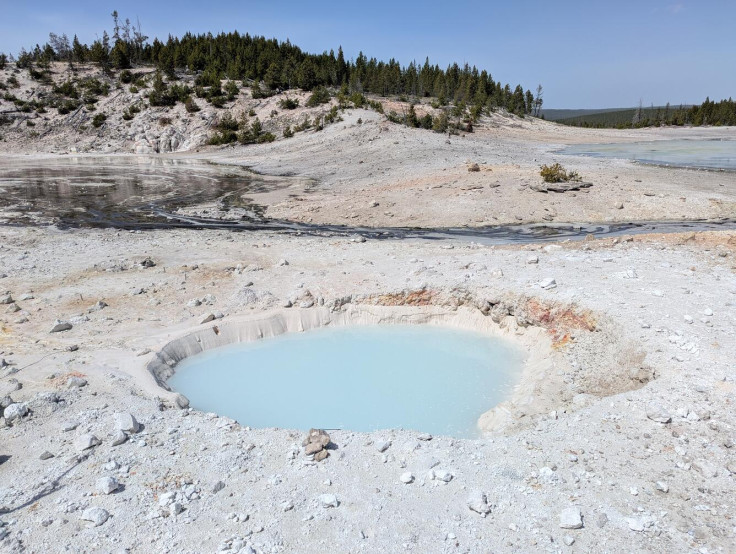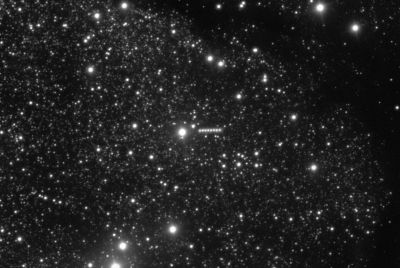Yellowstone National Park Volcano Eruption Fears Escalate After Mysterious Crater Forms
Understanding Yellowstone's Recent Hydrothermal Activity and What It Means for Future Volcanic Risks

A new, rapidly growing hole filled with icy blue water has appeared in Yellowstone National Park's Norris Geyser Basin, raising concerns about potential volcanic activity. People fear that this feature, formed over recent months, may signal ongoing underground shifts in one of the world's most active supervolcanoes.
In April 2025, park geologists inspecting temperature stations at Norris Basin uncovered a startling sight: a 13-foot-wide pool of milky, light blue water. Located just west of 'Tree Island', the pool's presence was entirely new since their last visit. Its creation appears linked to a hydrothermal explosion, but the process behind it was slow and subtle.
The Timeline of the Formation
Satellite imagery analysis reveals that the hole did not exist before December 2024. By 19 December, the area was still featureless, but by 6 January 2025, a small depression had formed. This depression gradually developed into a full-fledged water-filled pool by mid-February. The timing was confirmed by satellite data, which showed no signs of the feature earlier in December, but clear evidence by early January.
Geologists used multiple tools to understand how the hole formed. Notably, an infrasound monitoring station installed in 2023 detected several low-level acoustic signals from the area. While no large explosion signals appeared, these faint sounds suggest a series of small, ongoing events rather than a sudden, catastrophic blast. Such signals began around Christmas 2024 and continued into early February 2025.
@mistergenius11 A Gaping Hole Full of Milky Blue Water Has Appeared at Yellowstone. #yellowstone #foryou #vulcano
♬ Native American Female Vocal - Andrea Krux
What the Evidence Tells Us
The absence of seismic activity during the formation indicates the process was gradual. Rather than a single violent eruption, scientists have hypothesized that multiple minor events caused rocks and silica mud to be ejected, creating the initial depression. These small disturbances eventually led to the pool filling with silica-rich water, which remains warm at roughly 43 degrees Celsius (109 degrees Fahrenheit).
This behaviour is consistent with previous hydrothermal activity in Yellowstone, where small explosions are common. The park's history records other such events, including the notable 1989 Porkchop Geyser eruption and a 2024 explosion in the Biscuit Basin. However, the recent formation near Tree Island differs by being more gradual, suggesting a number of hydrothermal processes.
Implications for Yellowstone's Volcanic Risks
While hydrothermal explosions are frequent in Yellowstone, they rarely escalate into larger volcanic events. Still, the presence of new features like this raises questions about beneath-the-surface activity. The park's monitoring systems, including satellite imagery and infrasound sensors, are designed to catch signs of significant unrest.
The current evidence indicates that the feature's formation did not involve a major eruption. Instead, it resulted from a series of small, low-energy events. Experts emphasise that such activity is typical in Yellowstone's dynamic geothermal environment and does not necessarily point to an imminent eruption.
Online Response
Netizens online have responded to this recent development with fear and fascination, with some scepticism thrown into the mix as well. 'That's AI', quipped one TikTok commenter. 'Is this why all the animals are leaving?', asked another.
Others chose to educate the rest by quoting the official USGS website and other sources to reaffirm that though Yellowstone's face may have changed, eruption risks still remain low.
Yellowstone's extensive surveillance continues to track changes in the caldera's behaviour. The new hydrothermal feature near Tree Island highlights the ongoing underground adjustments, but it does not currently suggest an increased eruption risk. Scientists remain cautious but recognise that the complex interactions in this supervolcano require close observation.
© Copyright IBTimes 2025. All rights reserved.




















